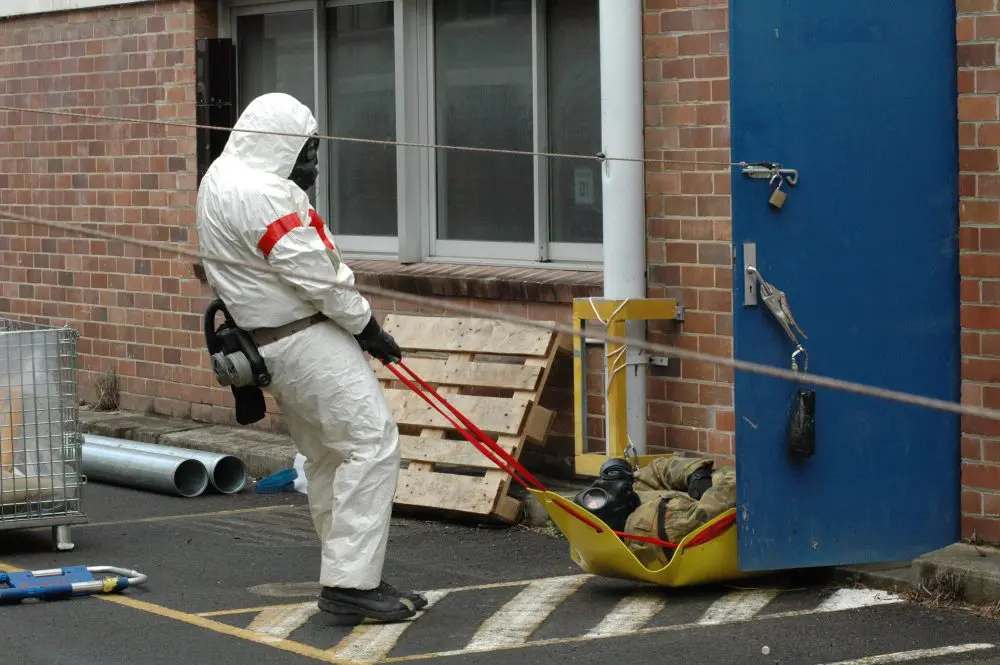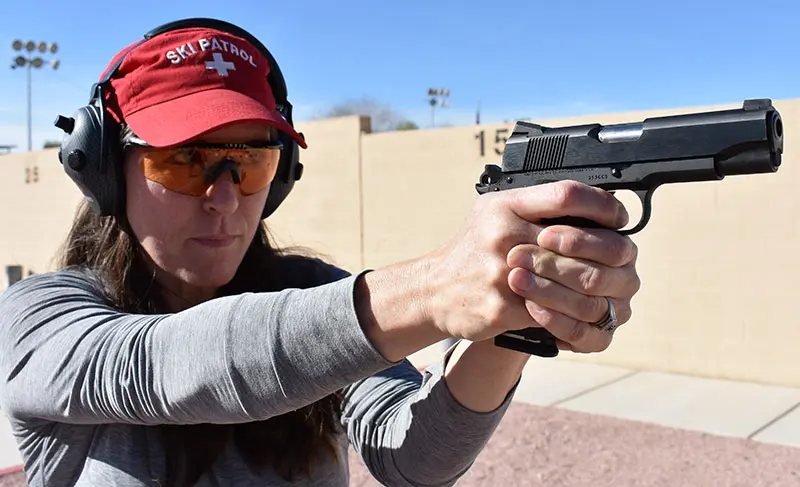
There has been a huge escalation in the amount, type and quality of tactical training. But what type of training is appropriate for you or your team?
Several years ago, I attended a tactical training session instructed by a former Navy SEAL. He was very knowledgeable and had operational experience in what he was teaching, but much of it was just not appropriate for civilian law enforcement or private citizens. One example was his insistence on carrying weapons at high port, especially in the stack. That may work well for a group of SEALs who are close in size to one another both in height and weight, and all carrying the same type of weapons.
But when he applied that same technique to cops of vastly different sizes, with heights and weights from one extreme to another and weapons varying in length, style and type, it simply was not practical. His reason for the SEALs carrying at high port may be right for them. If they discharge a round into a rubber raft, bad things can happen and the mission may fail. Likewise if they discharge a round into the air, it falls harmlessly into the water.
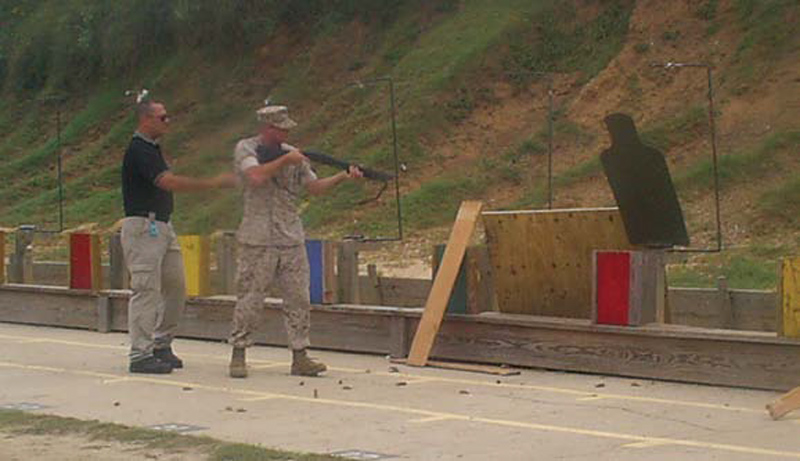

Table of Contents
COPS ARE NOT SEALs
The opposite is true for law enforcement— and I’m a career LEO. If we have operators of varying heights, a shorter operator is behind a taller operator at high port, and a negligent discharge occurs, it could—and most likely will—be fatal. The other issue is, if we as law enforcement discharge a round into the air, it may very well succumb to Murphy’s Law and kill little Billy playing in his backyard three streets over.

This is the reason that, when I’m instructing law enforcement teams, I always preach muzzles down or a modified Sul position while stacked close to other operators. If, God forbid, there’s a negligent discharge, it would hit the operator in the leg as opposed to the head in high port. I have witnessed a negligent discharge happen only inches behind me as we were preparing for an operation. Fortunately the operator had the weapon pointed at the ground as he was trained to, and it impacted into the ground with no other consequences than his embarrassment—and our shock and anger.
One of the worst things about attending inappropriate training is that afterward you have to unlearn inappropriate techniques. When the lieutenant who had set up the training with the former SEAL asked why I wasn’t making my team carry at high port, I started a 20-minute discussion of the abovementioned issues, and his only response was “That’s how the SEALs do it.”

He could not wrap his head around the fact that it was not practical or right for our SWAT team. Although I finally won this argument, it took several discussions and a lot of articulation on something as simple as how to carry weapons in a stack. The lieutenant simply could not understand how something from the famed Navy SEALs could not be “good enough” for us. If there were one technique that worked 100% of the time in 100% of the situations, we would teach that and go home.
ARTICULATION

Take what you can, modify it to work for you and if you can’t use it now, there may come a time that you can. I try to apply that reasoning to all training, but if you attend training that’s right for your mission requirements to begin with, you will find you can use more of it.
Proper articulation and terminology are just as important as the techniques. Knowing how to do techniques is only part of the training. You should leave the training with the knowledge of why and when to use the techniques as well.
When I started my law enforcement career, I attended every training course I could, most of which I paid for myself. I remember taking a course put on by a former Delta Force operator and, although he was a very good tactics instructor, he could not articulate the when or why.
I attended the course with a friend of mine who was also the team leader for his SWAT team. The instructor made several references to kill teams and setting up ambush positions on choke points, running a linear ambush, rules of engagement (ROE), even targets of opportunity—and this was for a civilian law enforcement course.
I recall my friend and I commenting on what would happen if we used those terms on the witness stand.
Although some of the techniques he taught were not pertinent for me, I was able to modify a few things, and he did have several good points that I made work for me. I’ve been in LE for almost 20 years, and one thing I’ve learned is it’s all in how you say and document your actions.
The reason many teams went away from the term “SWAT” in favor of “SRT” was the way attorneys attempted to demonize police actions. Is it semantics? Absolutely, but if you’re a police officer or private citizen on the stand being grilled by a defense attorney, you want to use the right terminology and be able to answer why you did what you did.
Were you following ROEs or a use of force continuum? Did you set up an ambush position on a choke point or were you holding perimeter to protect the rest of the neighborhood from a violent felon?
If you’re a civilian, do you understand the laws in your state and the use of force standard you will be held to in a court of law? Does your state make a distinction between using force in your home and outside your home? Do you have a duty to retreat? Can you use lethal force to protect property in your state?
Proper training should be able to answer all those questions and help you formulate and articulate responses to any questions regarding your actions.
“SWAT” TRAINING
I sometimes receive calls and emails from private citizens and officers wanting “SWAT” training. One of my first questions is if they are on a SWAT team or military specialty unit. I try to explain that the techniques and tactics an individual officer uses are close to the techniques we train a private citizen in for self or home defense, and are not the same techniques I teach to a team. For example, the individual officer or civilian will use a slower search method to clear a space than a SWAT team will.
Somewhere along the line, everyone thinks they need to practice dynamic entries in a shoot house. This is not suitable training for most individual officers or civilians.
When I clear a structure with my team, we have ten operators inside with more operators in breach and hold points capable of being called up if needed. We also have ports (window break and rakes with operators covering inside) in place with limited penetration. And all this is under the watchful eyes of our snipers, who are providing long cover, and after we have used distraction devices to overload the suspects’ OODA (observe, orient, decide, act) loop.
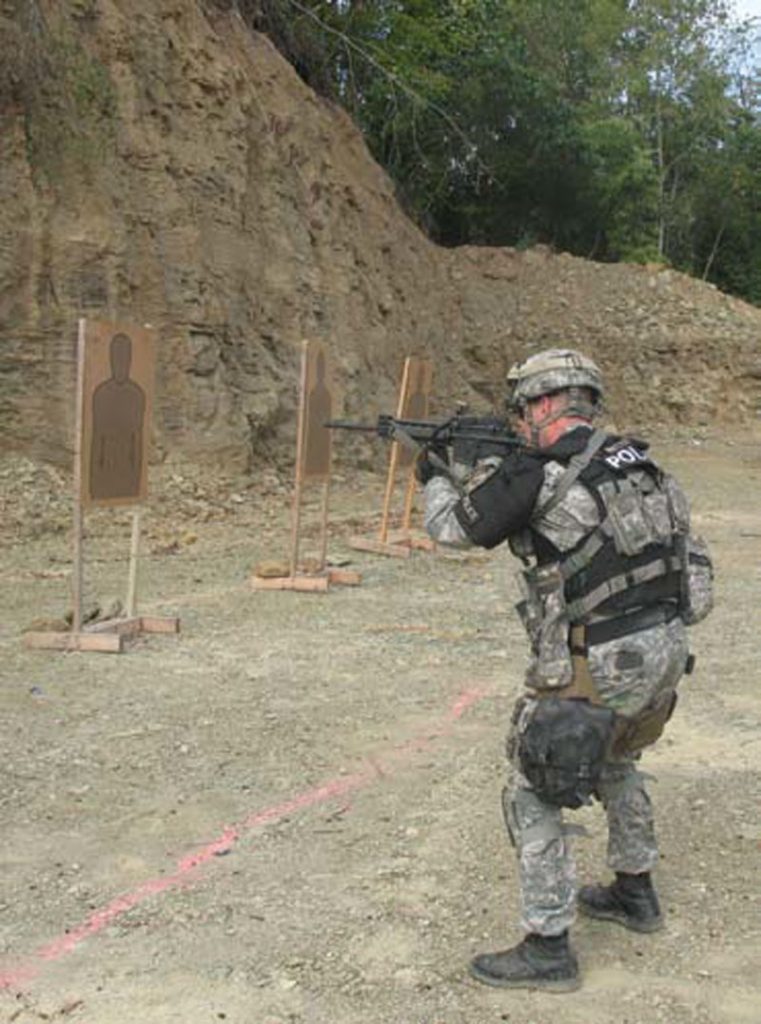
This is in stark contrast to the techniques I teach a private individual, where I train them to clear only enough of the house to gather their loved ones, get to a safe spot, call the police and set up a defensive position, or escape the threat if feasible.
The techniques used by a patrol officer who has to clear a structure by himself or with an additional officer are still different than that of a team. Spending time in a shoot house can be beneficial if your instructor understands what is relevant for you based on your mission or needs. Training appropriately is much more important than training the same way some high-speed special operations unit does.
BASICS, BASICS, BASICS
Appropriate training starts and ends with the basics.
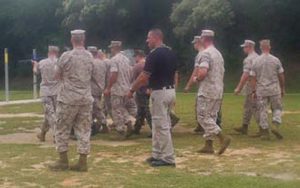
Many people think that special operations teams like SWAT, SEALs, Delta, Rangers, and Recon have some magical power and training techniques. The truth is they don’t. What they do have is a mastery of the basics. They have thousands of hours reinforcing the basics, shooting drills with all their weapon systems until they can’t get it wrong. The old saying, “A good shooter shoots until he gets it right. A great shooter shoots until he can’t get it wrong” applies here.
Most people train until they learn a skill and then they stop, only repeating what they have learned and never taking it to the next level.
I was instructing a tactical handgun course for patrol officers and private contractors. All were better than average shooters. The first day, I started out standing on a static range. Everyone did fine, but as soon as I made them shoot kneeling, prone and supine, things started to break down.
Once the close proximity shooting started and they had to fight with someone in Redman gear to increase their stress shooting, simple breakdowns occurred. They had not mastered the basics, they had not done reloads while out of breath lying on their side behind cover, they had not tried drawing their weapon after a 6’4”, 240-pound man had knocked them to the ground.
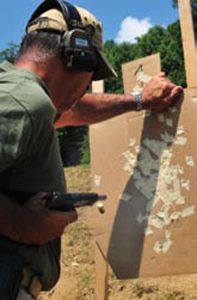
WHO DOES IT RIGHT?
For the last few years, I have been instructing members of the USMC in South Carolina. I love training with the Marines because they understand the concepts of appropriate training and mastering the basics. I spend several days training on just one topic that most people spend only a few hours on, but we train every possible scenario at the highest level, making every Marine not only perform, but understand the when and why.
To their credit, the Marines understand that knowing the technique is not enough. We run scenarios until they cannot get them wrong, through fatigue, injury, repetition after repetition mastering the basics. These guys are hard chargers, and I know when I leave that they’ve mastered the training. I would put them up against anyone and know they will win decisively because they understand what the right training for their missions is and because they have mastered the basics.
EGO CHECK
Appropriate training should start with you making an honest assessment of your mission and requirements. If you need to master the basics, seek training to help you do that. Don’t get put off if you go to a training course and learn something you already know— anything that reinforces the tactics and techniques you are already using is a positive thing.
Put your ego in check. Do you really need to attend a SWAT course, or is a tactical handgun or Combat Focus Shooting course better for you?
If you’re a private citizen, man up and admit that you’re not going to be busting down crack-house doors anytime soon. Though perhaps not as satisfying in the fantasy department, training to defend yourself and your home is much more likely what you need.

